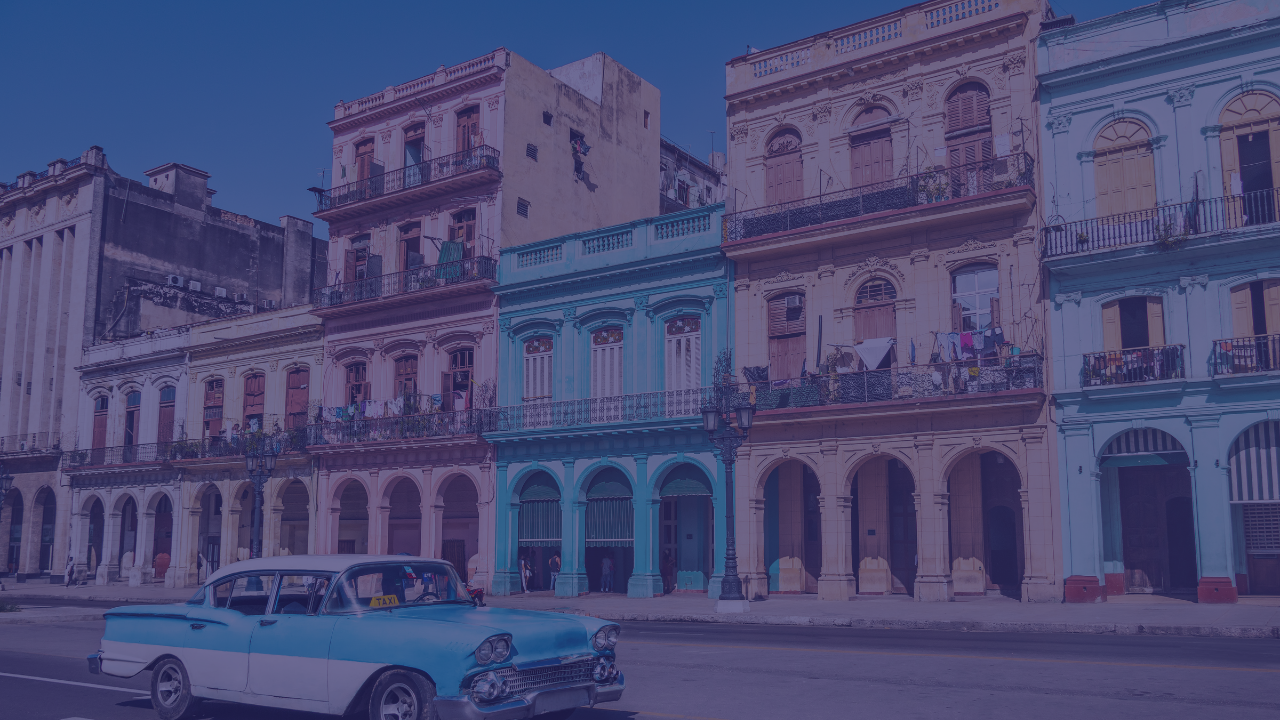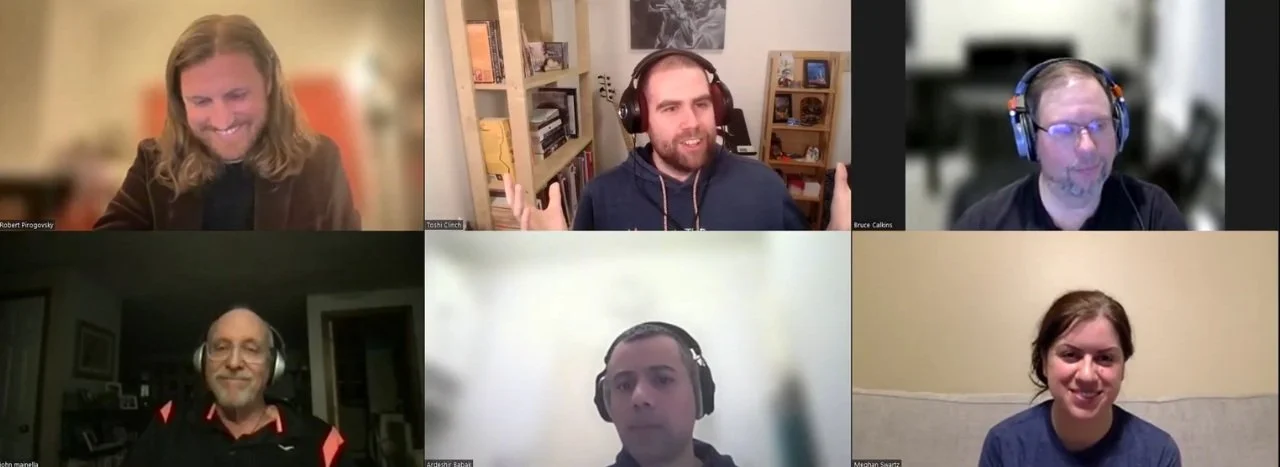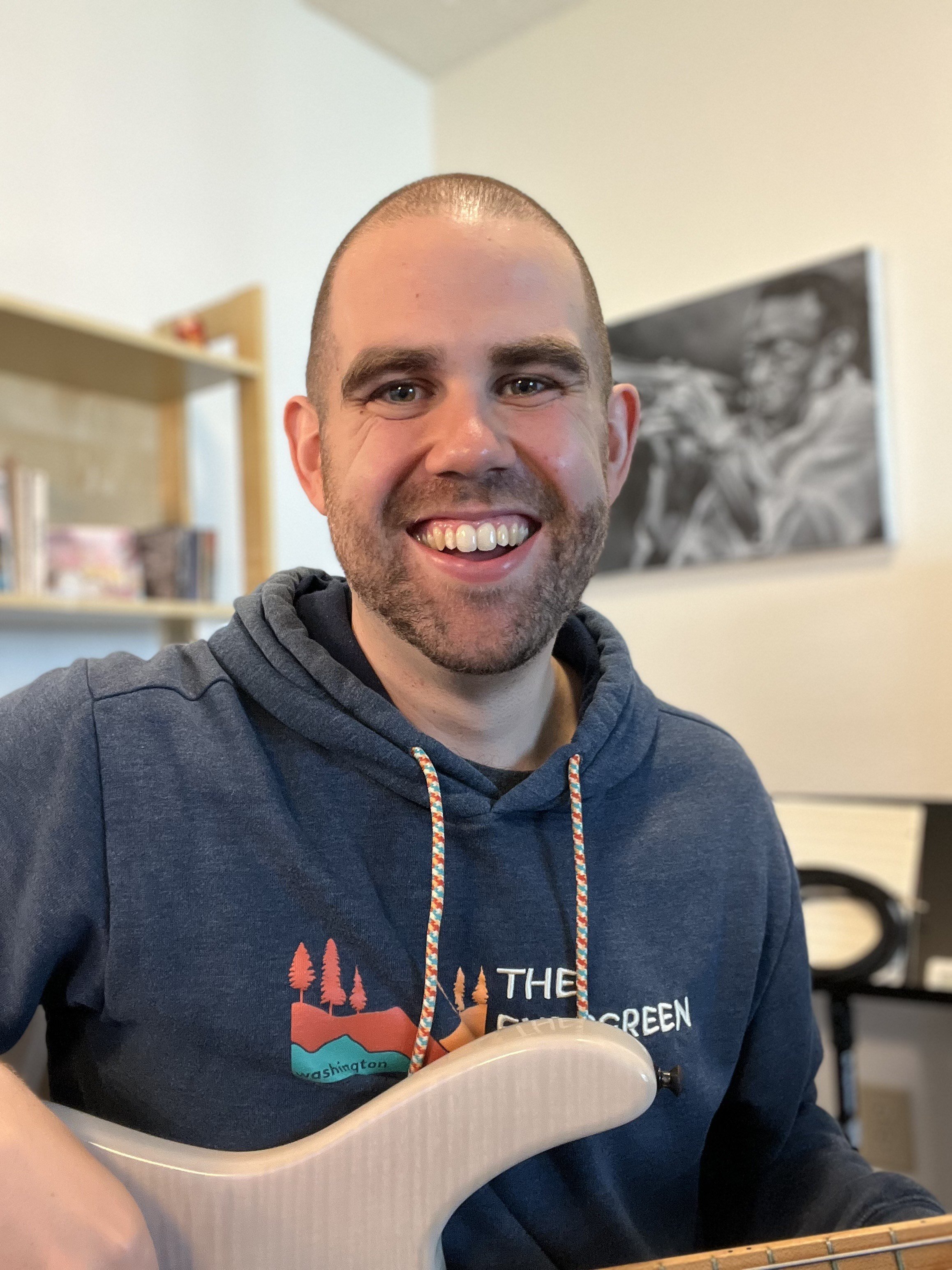
LATIN ARRANGING
Cuban Styles
Course Overview
It’s no secret that Latin music is filled with amazing sounds and textures that have captured the attention of arrangers for centuries. Unfortunately, if you want to make use of the vast array of styles and guarantee that you are doing so authentically, there is a drastic learning curve. To make the situation worst, there are almost no resources out there to help you along the way. That’s where this particular course comes in. Over 10 weeks we explore the music of Cuba, the birthplace of the montuno and percussion instruments such as the congas, bongos, and timbales, as well as the home of a plethora of styles including Mambo, Cha-Cha-Cha, and Rumba. We explore centuries of music, unpacking the core characteristics of each style and showing how they relate to one another, with the core goal being that participants come away feeling confident about writing Latin music. Every session is taught live through Zoom with Toshi Clinch, an experienced arranger who will answer your questions and guide you through each topic. If you can’t make a session don’t worry, each live Zoom is recorded and sent out to participants afterward so you can catch up or look over the content in your own time. The course has a maximum capacity of 25 people to guarantee that all participants have access to Toshi and achieve their arranging goals.
Curriculum
Cuban music is a complex tapestry of interwoven styles and characteristics that can be boiled down into five major categories. To better understand how they relate to one another, over 10 weeks we look at the development of each category and define key qualities to help you capture the sound in your own writing.
-
Cuba was one of the first major New World countries to be colonized by the Spanish and with them came a wave of musical influences both from Europe and Africa. Understanding the key elements of these influences provides a fantastic framework for analyzing Cuban music and helps define many of the early components of Latin music. In this session we cover a number of the major characteristics of the three musical influences on Cuba, taking time to highlight Afro-Cuban folkloric styles such as those from the Congolese, Yoruba, Dahomey, and Carabali nations.
-
Thanks to centuries of creolization, in the 1700s a variation of a European musical format emerged in Cuba called the contradanza. By blending Afro-Cuban folkloric elements with Baroque characteristics, the style eventually transformed into what we now call danzón, Cuba’s first nationally recognized musical style. In this session we will revist the Afro-Cuban folkloric styles to see how certain rhythms merged with the European Country Dance format, creating one of the first truly creolized Cuban styles of the 1800s.
-
Due to centuries of slaving, the Afro-Cuban population represented dozens of different African nations. Forced to work together, they developed a new type of music which blended many of the major elements of their cultures together, creating a unique style which eventually became the backbone of percussion vocabulary in Latin music. In this session we will explore three types of rumba, specifically yambú, guaguancó, and columbia, and how they have defined the role of the congas for more than a century.
-
Cuba has a rich vocal tradition stretching from the theatrical productions in the west to the farmlands and tobacco plantations of the east. In this session we explore how three vastly different styles developed, each of which defining the sound of the Cuban trova tadition.
-
Similar to the street parades of Brazil or New Orleans, Cuban’s also have annual processions which feature unique music. Drawing from the rumba tradition, much of the music features complex interwoven rhythms played by large ensembles called comparsas. In this session we will explore the difference between eastern and western conga de comparsa, as well as unpack the variety of rhythms associated with the style.
-
Possibly the single most influential Cuban style, son took the world by storm at the start of the 20th century when it introduced the montuno to audiences. Evolving out of a number of rural eastern styles such as changüí, this session will cover how the style came to be as well as the different components required to emulate the sound of early son cubano.
-
As son grew in popularity, it attracted a variety of musicians to the style, each of which brought their own approach. However, while there were many who played son, one stood out and took the style further by developing a variation titled son montuno. In this session we will focus on the music of Arsenio Rodríguez, uncovering how he reinvented son through incorporating new instruments and changing the overall form of the style. We will also spend time looking at the vast number of styles that merged with son and how it changed the landscape of Cuban music forever.
-
Thanks to the popularity of son, every major Cuban style was impacted including danzón. In a similar manner to Arsenio Rodriguez and how he created son montuno, another musician by the name of Antonio Arcaño was redefining danzón evenutally leading to the creation of two new styles: mambo and cha-cha-chá. In this session we will explore how through the innovations of Arcaño, as well as a number of other arrangers, turned danzón into two of the most influential Latin styles of the 1950s. We will then spend some time looking at how mambo and cha-cha-chá transitioned from an orchestral style to being associated with big bands through artists like Tito Puente.
-
Shortly after mambo and cha-cha-chá took the United States by storm, Cuba was distanced from the West due to the 1959 revolution. As a result, the Latin music in the USA developed in a completely different way to what took place in Cuba. This session will focus on how those in America started to prioritize a more traditional form of Cuban music, eventually leading to the creation of Salsa. We will then shift to focusing on Salsa specifically, unpacking the major characteristics of the style.
-
While Latin music in the United States become more traditional, Cuban music kept developing and took on influences of other styles such as rock, soul, and funk. In this session we will look at songo, looking at how a new generation redefined the sound of Cuban music and how it eventually turned into timba.
Testimonials
Learn At Your Pace
Everyone learns differently and you deserve to feel comfortable with obtaining new skills no matter your background. Arranging 101 is designed to be flexible. If you want to go through the course quickly, you can, but if you have commitments that you can’t move or prefer a more relaxed learning experience, we’ve got you covered. Every participant receives lifetime access to course resources.
Ask Questions & Learn In A Digital Classroom Setting
- OR -
Watch A Recording
Supplemental Resources Are Included
Alongside the course we provide weekly readings and exercises which unpack everything covered in the sessions. These include:
detailed readings which cover all of the topics in more detail and include a number of recordings and score examples
dozens of workbook exercises with an accompanying answer key
feedback exercises where you can apply the techniques in your own writing and receive personalized feedback
Receive Personal Feedback
For those wanting to apply the content covered, each week includes a set of feedback tasks upon completion participants receive in-depth feedback from the instructor. The feedback is tailored to each person’s level of experience as well as their personal arranging goals and when necessary, participants may resubmit work and receive additional comments. For those that may need clarification or assistance on topics, there is also ample time in every class to ask questions as well as an unrestricted discussion time at the end of each zoom call.
Get To Know Your Instructor
Toshi Clinch is a renowned Australian arranger and educator who is deeply passionate about growing the world of jazz education through accessible formats. Falling in love with music at the ripe age of six, for years Toshi was captured by the mystery behind writing music for big band. Fast forward to 2013, he was given the opportunity to explore his curiosity at the prestigious University of North Texas where he majored in Jazz Arranging under the tutelage of Grammy-nominated composer Rich DeRosa (JLCO, Metropole Orkest, WDR Big Band) and had opportunities to write for guest artists such as Danilo Perez (Dizzy Gillespie, Wayne Shorter). After graduating in 2016, Clinch quickly established himself as one of the go-to arrangers for Royal Caribbean Cruise Lines, writing arrangements for a number of vocalists from T.V. shows such as America’s Got Talent, The Voice, X Factor, as well as performers from Broadway and the West End. Notably, during this period he also had the opportunity to write for major artists such as Yo-Yo Ma, James Morrison, the Glenn Miller Orchestra, and the Tommy Dorsey Big Band. Toshi has produced a number of his own big band albums including Vesuvius (2017), Gillespiana (2020), and Duke Ellington’s Sacred Concerts (2022).
In recent years, Toshi has focused on music education by starting his own music education business. Through this program he has provided hundreds of performance opportunities to up-and-coming musicians as well as collaborated with international artists such as Jacob Collier, Terri Lyne Carrington, Dick Oatts, the Jazz at Lincoln Center Orchestra, and was nicknamed the “Quincy Jones of Australia” by Rich DeRosa for his prolific output.
In 2019, alongside the youth program, he started offering online courses in a variety of topics such as arranging, music theory, and jazz styles such as Bebop, Swing, and Latin Jazz. As a result, he has now helped hundreds of participants achieve their musical dreams, with many going on to make their mark on the international jazz scene.
Course Details
Capacity: Maximum 25 participants
Course Length: 10 Weeks with a mid course break
(Thursday nights, March 19 to May 28)
Session Length/Times: 90 minutes, either
7-8:30pm Pacific Time (10-11:30pm ET)
-OR-
7-8:30pm GMT (1-2:30pm ET)
Cost: $350 USD Early Bird Discount $250 USD (Ends Feb 1)
(payment plans available, 100% Refund if you’re not satisfied)
Delivery: Online via Zoom (every live session is recorded and provided to participants shortly afterwards with attendance being optional)
Resources: Readings, exercises and recordings are provided weekly and you’ll receive lifetime access to all content.
Feedback: Upon completion of the weekly feedback tasks, you will receive personalized comments from Toshi
Extras: Multiple masterclasses which cover topics such as Sibelius, conducting, and music business, as well as access to 400+ digital scores, scroll down to learn more
Requirements: Any digital notation software such as Sibelius, Finale, Musescore etc (you can opt to do everything by hand too)
Expression of Interest
Extras
When you sign up to a Latin Arranging cohort you also receive a number of extra resources for free. These include:
Introduction to Sibelius Masterclass
When it comes to composing, one of the biggest setbacks is feeling comfortable with notation software. In this masterclass you’ll come away with the skills to use Sibelius efficiently, removing any boundary you may have with the software. In particular, we’ll be looking at hot keys, functions, and tricks professionals use to achieve maximum productivity.
Big Band Conducting Masterclass
It’s one thing to write amazing music and another to lead other musicians through performing it. In this masterclass we’ll cover the in’s and out’s by looking at everything from how to have a productive rehearsal all the way to what to do when something goes wrong in a performance. You’ll come away with the confidence to conduct your own big band and be able to make the most out of any score.
The Business Behind Arranging Masterclass
If only it was as simple as writing music. To be a professional arranger it takes more than creativity and requires some business skills to establish a sustainable career. In this masterclass we dive into the nuts and bolts about how to land a commission and get paid to do what you love.
Digital Score Library
Not only do we provide in-depth analysis of a number of scores throughout the course but by participating you also receive access to a digital score library of over 400 PDFs. They are made up of a mixture of small group and big band arrangements that Toshi has personally written or transcribed throughout his career.







